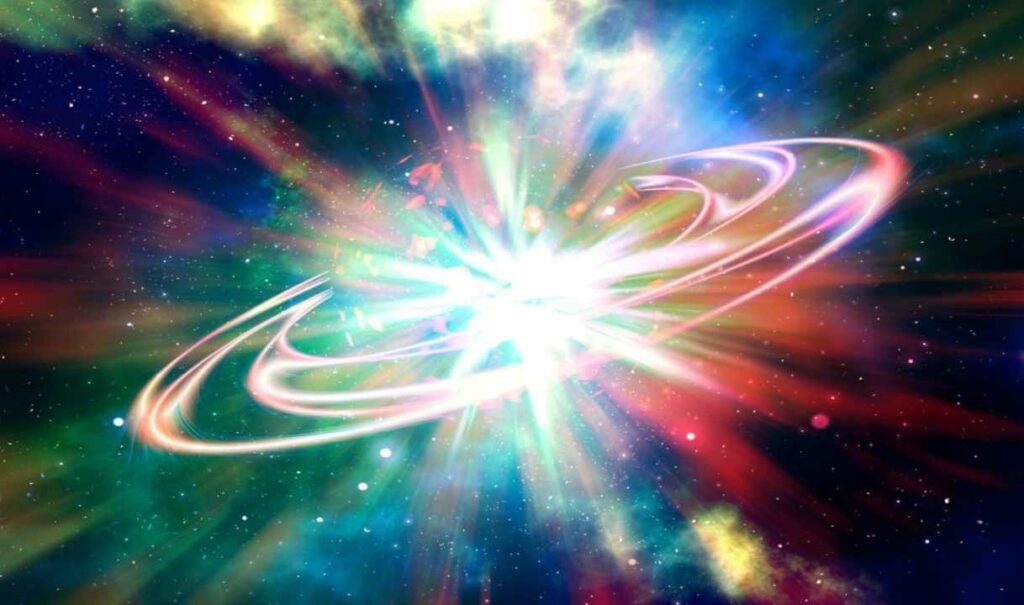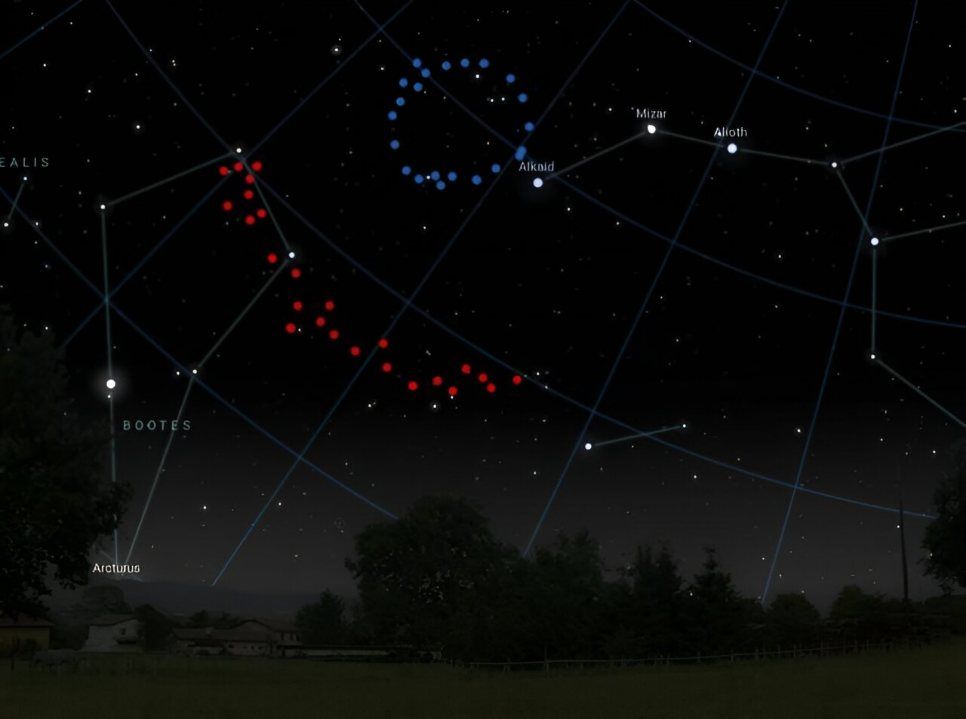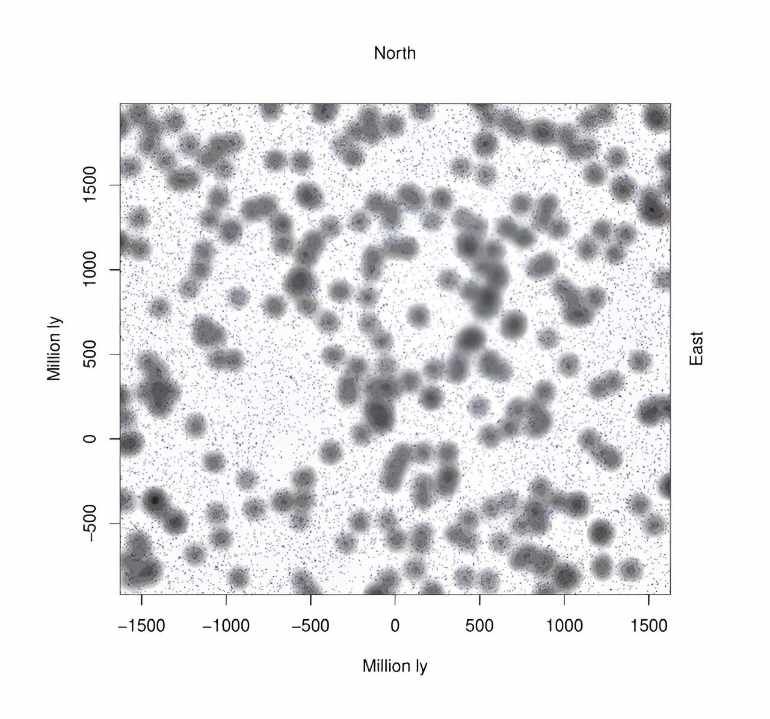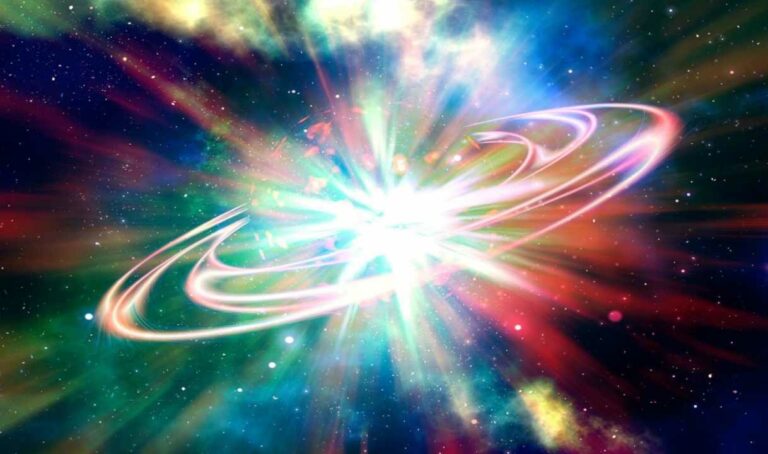Discovery of Massive Cosmic Structure Challenges Our Understanding of the Universe
The identification of a second mega structure at cosmological distances has added new questions towards some of the fundamental concepts of cosmology.

The Big Ring in the Sky is 9. The quasar is estimated to be located at a distance of about 2 billion light years from the Earth. It is estimated to be about one in diameter. measuring approximately 3 billion light-years across and has a circumference of approximately 4 billion light-years in diameter. Just to imagine, if only we could look at the Big Ring with our naked eyes, it would take approximately fifteen full moons for them to span its diameter.
It is the second ultra-large structure identified by University of Central Lancashire Ph. D. student Alexia Lopez who, earlier, two years back, detected the Giant Arc in the Sky. Notably, the Big Ring and the Giant Arc, the latter being much bigger and measuring 3. 3 billion light-years across, are in the same cosmological area—they are observed at the same distance, for the same look-back time, and compete for a mere 12 degrees in the celestial sphere.
Alexia remarked, “The nature of neither of these two ultra-large structures can be easily put into any of the categories in today’s cosmology. ”But such ultra-large objects, these unique shapes, and such cosmological neighbors can only be portending something meaningful, though we do not know just what.
“One possibility is that the Big Ring could be related to Baryonic Acoustic Oscillations (BAOs). BAOs arise from oscillations in the early universe and today should appear, statistically at least, as spherical shells in the arrangement of galaxies. However, detailed analysis of the Big Ring revealed it is not really compatible with the BAO explanation: The Big Ring is large enough, and its shape is not a sphere.
There might be other reasons required, reasons that walked away from the orthodox view in cosmology. Another theory could be the Conformal Cyclic Cosmology theory which was developed by the Nobel-prize winner, Sir Roger Penrose. Circles in the universe might possibly be an indication of CCC.
A different possible cause could be due to interference from cosmic strings which pass through. Cosmic strings are long, thin and nearly linear mechanisms known as ‘topological defects’ that could have been formed during the early stages of the universe. Yet another Nobel laureate Jim Peebles has recently speculated that cosmic strings could well be involved in the creation of some of the other oddities in the large scale spatial organization of galaxies.
In addition, the Big Ring also violates the Cosmological Principle, similar to the Giant Arc violation. If the Big Ring and the Giant Arc are parts of an even larger structure then the problem for the Cosmological Principle becomes even more pressing.
Such large structures—and there are numerous other examples that have been discovered by other cosmologists—blow away the notion of what is regarded as an ‘average’ neighborhood in space. They are thus beyond the size limit that is theoretically feasible for construction, and they may present problems for the Cosmological Principle.
Alexia said, “The Cosmological Principle entails that the part of the universe that we can observe is considered a small part of what we believe the rest of the universe will contain. When we zoom out cosmologically, what we should see is a uniform distribution of matter across space meaning that we should not be able to see large scale inhomogeneities.
Scientists have estimated the current theoretical minimum size limit of structures in cosmological scales to be 1. 2 billion light-years, concurrently, these two formations are considerably larger – the Giant Arc is almost three times larger than the Big Ring and the Big Ring’s circumference is similar to the length of the Giant Arc.

“From current cosmological theories we didn’t think structures on this scale were possible. We could expect maybe one exceedingly large structure in all our observable universe. Yet, the Big Ring and the Giant Arc are two huge structures and are even cosmological neighbors, which is extraordinarily fascinating.”
The Big Ring looks like an almost perfect ring in the sky, but getting deeper Alexia identifies that it is more of a coil like a cork-screw and it is oriented face on towards Earth. The Giant Arc, which is about 1/15th of the radius of the observable universe, appears as a large, nearly semi-circular arc of galaxies in the distant universe. It is twice the size of the striking Sloan Great Wall of galaxies and clusters that are seen in the relatively nearby universe.
“The Big Ring and Giant Arc are the same distance from us, near the constellation of Boötes the Herdsman, meaning they existed at the same cosmic time when the universe was only half of its present age” Alexia added. “They also lay in the same right ascension, but only 12 degrees apart if one were to view the constellations from the night sky.

“Identifying two extraordinary ultra-large structures in such close configuration raises the possibility that together they form an even more extraordinary cosmological system.
“This data we’re looking at is so far away that it has taken half the universe’s life to get to us, so from a time when the universe was about 1.8 times smaller than it is now. The Big Ring and the Giant Arc, both individually and together, gives us a big cosmological mystery as we work to understand the universe and its development.”
Alexia, in collaboration with Dr. Roger Clowes from the Jeremiah Horrocks Institute of UCLan and Gerard Williger from the University of Louisville, United States, identified the new structure by observing absorption lines in quasars from the SDSS survey.
Employing the same technique that was used to find the Giant Arc, they looked at the intervening Magnesium-II (or MgII—it means the atom has lost an electron) absorption systems that are back-lit by quasars – these are distant super-luminous galaxies. These extremely distant, very luminous objects called quasars act as floodlights highlighting other much less luminous and much more distant galaxies that would otherwise remain invisible.
Alexia discussed her research on the Big Ring at the 243rd AAS meeting that took place on 10 January.
Do not forget to share your opinion with us to provide you with the best posts !




0 Comments